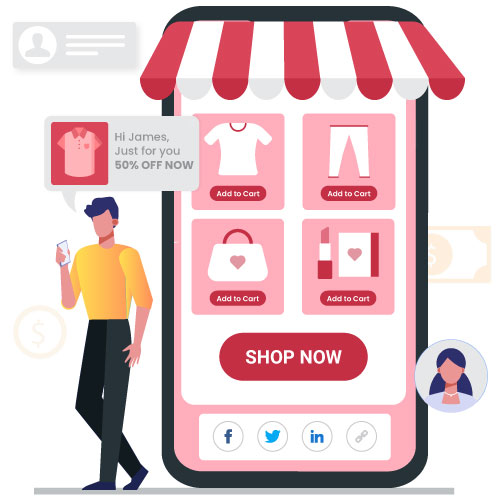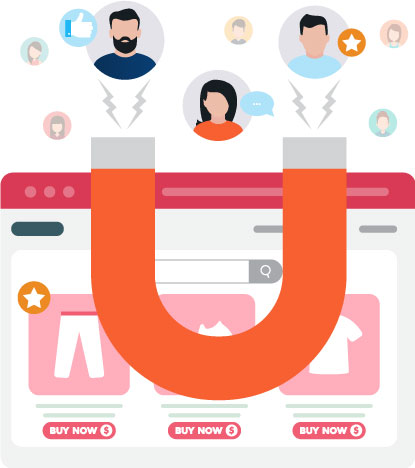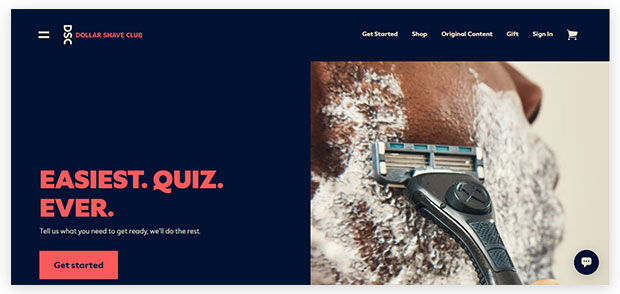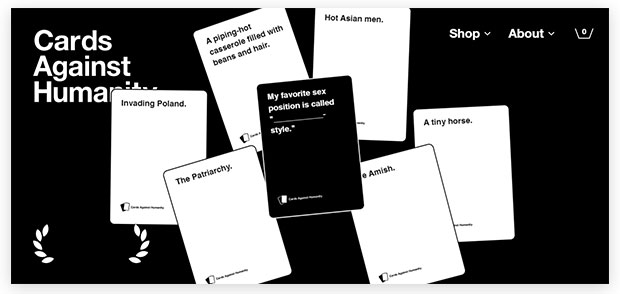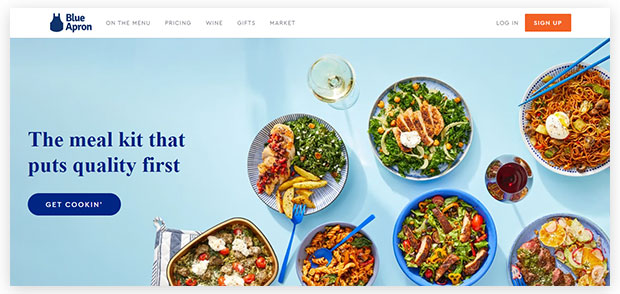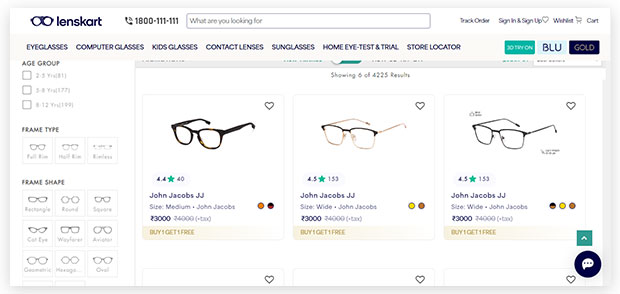The D2C (direct-to-consumer) sector has grown in double-digit numbers in recent years. In 2022, it is expected to expand at 19.2%. These figures are pre-Covid-19, meaning that direct-to-consumer is likely to increase further given the supply chain uncertainty and loss of control we have seen in recent months.
This blog will define direct to consumer marketing and its benefits and examine some examples of D2C marketing through new business arenas.
Contents
What Is Direct to Consumer?
D2C is a business-to-consumer (B2C) retail strategy in which a business creates, sells, sells, and ships a product directly to the customer.
Direct to Consumer selling simplifies the distribution process by bypassing intermediaries (such as third-party merchants and distribution partners), allowing D2C companies to offer products at lower prices than brands using traditional business models.
Also, in addition to retail distribution models, D2C companies can experiment with many different distribution channels, such as direct selling e-commerce, pop-ups, and social media partnerships.
D2C brands continue to capture the US retail market by providing consumers with quality, convenient products, and cost-effective shipping.
Companies like Casper Mattresses, Dollar Shave Club, and Warby Parker, among other brands, have established themselves and managed to disrupt their business using D2C sales models.
Benefits Of D2C
Shoppers are ready and willing to pay for quality, security, and service while enjoying the convenience of online shopping.
More than ever, brands adapt to consumer buying habits by shifting to direct selling models. Consumers begin their buying journey by making various purchasing decisions online, often researching product reviews and comparing brands and prices. As a result, consumer expectations of brands and retailers are higher.
1. Expand your brand’s reach
Before the internet, brands relied heavily on resellers to reach customers. Rarely did a manufacturer or wholesaler sell directly to consumers. However, with everyone now carrying a smartphone, brands can reach their customers anytime, anywhere.
There is no need for a physical store. Website translation and localization software, as well as customs, tax, customs, and payment software solutions, enable brands to expand their global market.
2. Depend less on retailers
Traditional retailers feel pressure from online giants like Amazon and big box stores like Walmart. Declining in-store sales are forcing retailers to consolidate physical locations. Loss of physical shelf space can affect your brand’s ability to get consumers to find your products in the store. More retailers are investing in e-commerce to retain market segments with locations harder to maintain.
3. Manage your brand account
Online marketing can be helpful for brands looking to promote their products, but there can also be obstacles. Many companies are ditching online marketplaces like Amazon and relying on eCommerce solutions.
It is difficult for brands to control consumers and businesses from undercutting fake and inferior products by selling them online.
Selling directly to your customers from your website also allows you to manage your brand message and image directly. Retailers and markets can overshadow and dilute your brand. Your message may be less effective when displayed alongside competing brands in retail stores and on websites.
4. Get to know your customers better
Direct to consumer means you have an open line of communication with your customers. You have the opportunity to educate your customers, interact with them and learn more about their needs and desires to use your products effectively.
The more information you have about your customer’s shopping habits and overall interactions with your brand, the better your brand can leverage its products to meet your needs and interests.
Direct to Consumer eliminates the reliance on consumer information to study trends. Receive real-time interest reports and personalized data on your direct-to-consumer website.
5. Improve customer loyalty
Buyers like it when the product interacts directly with them. A positive, personal relationship with a brand leads to more purchases. Customers enjoy working with product experts, knowing they are speaking to someone who knows the product inside and out.
Selling directly to consumers empowers your brand to delight customers with every interaction with your brand. Satisfied customers are more likely to recommend your brand and become brand ambassadors, your greatest marketing asset.
6. Offer a wider range of products
To remain competitive with larger stores, retailers sell a limited number of different brands to satisfy consumer interests. A limited supply of your product means consumers only see a subset of your offerings, which can lead to frustration when retailers run out of stock.
Direct-to-consumer marketing as a brand allows you to offer your entire shopping experience online. All styles, sizes, and colors are more readily available on their website than in most stores or locations.
Shoppers also know that customers leave the store quickly, so when there isn’t a sale, it’s best to get notified of in-store sales of your brand.
D2C Brand Examples
1. Dollar Shave Club
Dollar Shave Club, which sells razors (among other bathroom essentials), launched its e-commerce business with a 1:33-minute video. Their videos are awkward and memorable, with dance numbers, Black Hair Extensions , and a guy named Mike walking through a warehouse saying things like, ” Are slates good? No…our blades are great.”
The video was a great success. In the first three months, it gained 4.75 million views, and in the first two days, after the company launched, 12,000 people had already signed up for Dollar Shave Club razors.
Key takeaway: You may not be able to focus on a viral video, but you can create great content and use your money and other resources to promote it to the right people. Hopefully, your audience will work hard from there.
2. Warby Parker
This American brand has been a game changer for its industry. Companies such as VisionExpress, Boots Opticians, and Specsavers have dominated the market for years. They did nothing but sell products (frames) from other companies. Founded in 2010, Warby Parker has made buying glasses online possible and convenient.
For now, it remains the gold standard for direct-to-consumer brands.
Tip: The #Warbyhomemetryon’s marketing campaign encouraged customers to spread the word about what they were already doing (taking photos and videos of themselves trying on glasses) on social media, a channel through which Warby knew he could reach his audience.
These efforts also naturally led to a high-impact user-generated campaign that increased Warby Parker’s brand awareness among its customers. By using natural behavior, Warby Parker introduced their products to new customers and increased conversions.
3. Reformation
It’s no secret that the garment industry is one of the most robust. It’s hard to find your place.
The American womenswear brand Reformation has found a way out of this situation. They introduced a new unique selling point.
Regenerative materials are made from natural or recycled materials and shipped in sustainable packaging, not trendy clothing.
As a result, a brand has gained a massive cult following thanks to the values it represents.
4. Cards Against Humanity
Cards Against Humanity, a sarcastic and taboo card game created in 2011, understands its audience very well. And if you know your audience well, you can break the rules.
In 2013, for example, Cards Against Humanity increased sales by offering $5 more on Black Friday. In 2015, they sold nothing for $5… and received $71,000 from customers. In 2016, they dug a hole in the ground and filled it up again, raising $100,000.
I don’t know about you, but buying something safe strikes me as breaking the rules.
This strategy might not work for most companies, but it worked for Cards Against Humanity. The company knew its audience would listen, appreciate its humor, and pay for it.
Key Takeaway: While selling anything might not be a good idea, remember that doing some stunts is a good idea if you trust your audience to understand them. Who knows what? You can benefit from the process.
5. Blue Apron
Blue Apron supplies, ships, and simplifies local and healthy food manufacturing for customers. The brand includes ready-to-use recipes that match the ingredients in each signature box.
The company now faces plenty of competition from other subscription meal services, including Amazon, HelloFresh, Green Chef, and Plated. As a result of this competition, Blue Apron’s biggest challenge was to explain how its product stood out from the rest.
In 2015, Blue Apron reached out to prominent bloggers like Naomi of Love Taza and Anne of Fantastic Food, as well as social media influencers, and asked industry leaders to explain in depth what Blue Apron is all about. It is always a good strategy because food bloggers and social media influencers have already earned the trust of their audience.
Blue Apron took it a step further by sponsoring its content on podcasts like Gimlet Media and The No Sleep Podcast. The company has recognized podcasts as a sound investment. About 50 million people age 13 and older listen to podcasts, but over one-third of the top 100 iTunes podcasts are ad-free. Blue Apron’s sponsored content stood out from the crowd with abundant supply and low demand.
Hiring social media influencers and bloggers to promote your brand and sponsor podcast stories has paid off: In 2015, Blue Apron’s sales increased by 500%.
Key Takeaway: Blue Apron differentiates itself from the competition by using industry influencers to reach an already engaged audience and promote its content on applicable (and less-than-perfect) platforms like podcasts.
These eight direct to consumer brands are having a significant impact on e-commerce and consumer expectations. Try some of this article’s strategies and best practices for your business.
6. Lenskart
Lenskart is a Direct to Consumer eyewear brand in India, manufacturing and selling millions of lenses monthly. The company is valued at $2.5 billion and has become the first D2C brand in India to become a unicorn company.
Are you ready to be a D2C brand?
If you have a business model that works Maybe, it’s time to improve your game.
The direct consumer is another new e-commerce business model. However, many of the examples mentioned in this article demonstrate its potential.
If you are considering becoming a D2C brand, there are several things to consider. You must complete the process by creating your distribution channel and doubling your social media presence.
NotifyVisitors helps you in expanding your brand’s reach, promoting products, increasing in customer base, etc. To get in touch, Schedule a demo with us.
FAQs
1. What are direct-to-consumer strategies?
The direct-to-consumer (D2C) strategy allows CPG manufacturers and brands to buy and sell their products directly to consumers, bypassing retailers or intermediaries. D2C brands often market and sell their products through online media.
2. Why is D2C important?
Since D2C allows each brand to access customers through any channel directly, the brand can build better relationships with its customers by connecting directly and providing content that best resonates with its audience. Improve the customer experience.
3. How can we increase D2C sales?
Building long-term relationships with your customers is the best part of any business. It’s crucial to deliver value to your customers across multiple dimensions. A valued and loyal customer can help you increase D2C sales but also help spread your brand to their friends and family.

























 Email
Email SMS
SMS Whatsapp
Whatsapp Web Push
Web Push App Push
App Push Popups
Popups Channel A/B Testing
Channel A/B Testing  Control groups Analysis
Control groups Analysis Frequency Capping
Frequency Capping Funnel Analysis
Funnel Analysis Cohort Analysis
Cohort Analysis RFM Analysis
RFM Analysis Signup Forms
Signup Forms Surveys
Surveys NPS
NPS Landing pages personalization
Landing pages personalization  Website A/B Testing
Website A/B Testing  PWA/TWA
PWA/TWA Heatmaps
Heatmaps Session Recording
Session Recording Wix
Wix Shopify
Shopify Magento
Magento Woocommerce
Woocommerce eCommerce D2C
eCommerce D2C  Mutual Funds
Mutual Funds Insurance
Insurance Lending
Lending  Recipes
Recipes  Product Updates
Product Updates App Marketplace
App Marketplace Academy
Academy

